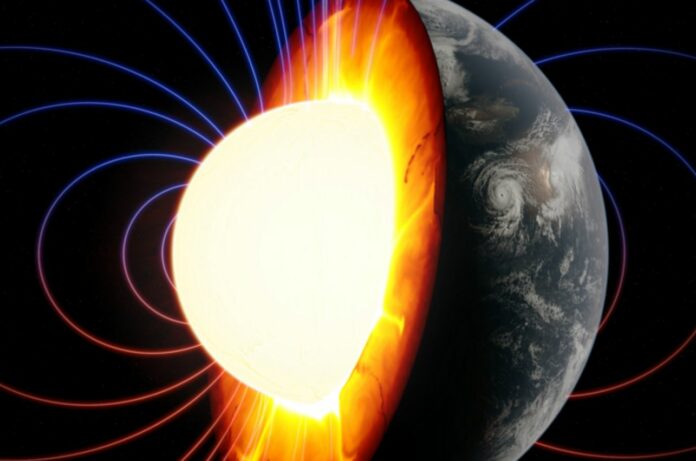New research analyzing bits of the planet’s oldest ancient rocks offers some of the clearest evidence yet that the Earth’s crust was pushing and tugging in a manner comparable to present plate tectonics at least 3.25 billion years ago. The research also gives the first evidence of when the planet’s magnetic north and south poles switched locations.
The two findings provide hints as to how such geological modifications may have produced a planet with a more favorable environment for the emergence of life.
The study, published in PNAS, was conducted by Harvard geologists Alec Brenner and Roger Fu and focused on a region of western Australia’s Pilbara Craton, one of the oldest and most stable cratons on Earth. The researchers demonstrate that some of the Earth’s oldest surface was shifting at a rate of 6.1 centimeters per year and 0.55 degrees every million years using unique methodologies and equipment.
In a prior investigation, the same researchers found that the ancient crust was moving at a rate that was more than twice as fast. Plate tectonics emerges as the most logical and compelling explanation for the speed and direction of this latitudinal movement.
According to Brenner, a graduate student in the Graduate School of Arts and Sciences and a member of Harvard’s Paleomagnetics Lab, “a lot of work seems to suggest that early in Earth’s history plate tectonics wasn’t actually the dominant way in which the planet’s internal heat gets released as it is today through the shifting of plates.”
“This evidence lets us much more confidently rule out explanations that don’t involve plate tectonics.”
These findings allow the researchers to challenge alternative explanations for Earth’s surface movement that aren’t included in conventional plate tectonics, such as “true polar wander” and “stagnant lid tectonics.” Since the newly observed higher rate of speed is incongruous with elements of the other two processes, the findings point more toward plate tectonic motion.
The report also details the earliest evidence of the reversal of Earth’s geomagnetic fields, or the time when the magnetic North Pole switched places with the South Pole. According to NASA, the pole has reversed 183 times in the last 83 million years and maybe several hundred times in the last 160 million years, making this type of flip-flop typical throughout Earth’s geologic history.
The reversal reveals a lot about the magnetic field of the planet 3.2 billion years ago. The magnetic field was probably steady and powerful enough to prevent solar winds from degrading the atmosphere, which is a crucial conclusion from these implications. This understanding, along with the findings on plate tectonics, provides hints as to the circumstances in which the earliest forms of life originated.
“It paints this picture of an early earth that was already really geodynamically mature,” Brenner adds. “It had a lot of the same sorts of dynamic processes that result in an Earth that has essentially more stable environmental and surface conditions, making it more feasible for life to evolve and develop.”
Crust, or outer shell, of the Earth is made up of roughly 15 movable blocks that hold the continents and seas in place. Long ago, as the plates migrated toward and away from one another, they created new mountains, continents, and rocks that were exposed to the atmosphere. These new rocks then underwent chemical reactions that over the course of billions of years fixed the Earth’s surface temperature.
Due to the fact that the oldest bits of crust are pushed into the inner mantle and never come back to the surface, it is difficult to determine exactly when plate tectonics began. In fact, no rock on Earth is older than around 4 billion years, and only about 5 percent of all rocks are older than 2.5 billion years.
Overall, the work contributes to the expanding body of knowledge showing tectonic movement began relatively early in Earth’s 4.5 billion-year history and that the earliest living forms evolved in a more temperate environment. In 2018, members of the project went back to the Pilbara Craton, which is about 300 miles long. They used a drill to extract samples from the thick, ancient crust there, which were then examined for magnetic history back in Cambridge.
The researchers developed a number of innovative methods for figuring out how and when materials become magnetized using magnetometers, demagnetizing tools, and the Quantum Diamond Microscope, which captures magnetic field images and accurately detects the types of magnetized particles in a sample. This lets the scientists figure out how, when, and in what direction the crust moved, as well as how the Earth’s geomagnetic poles affected it.
Researchers from the Departments of Earth and Planetary Sciences (EPS) and Physics at Harvard worked together to make the Quantum Diamond Microscope.
Fu and Brenner want to continue focusing on the Pilbara Craton in future research, while also examining other ancient crusts throughout the world. They are looking for ancient proof of plate motion similar to what occurs today and of the time the Earth’s magnetic poles switched positions.
“Finally being able to reliably read these very ancient rocks opens up so many possibilities for observing a time period that often is known more through theory than solid data,” adds Fu, professor of EPS in the Faculty of Arts and Sciences. “Ultimately, we have a good shot at reconstructing not just when tectonic plates started moving, but also how their motions — and therefore the deep-seated Earth interior processes that drive them — have changed through time.”
Source: 10.1073/pnas.2210258119
Image Credit: Alec Brenner
You were reading: New Evidence: Earth’s Crust Was Pushing And Pulling Like Plate Tectonics 3.25 Billion Years Ago
